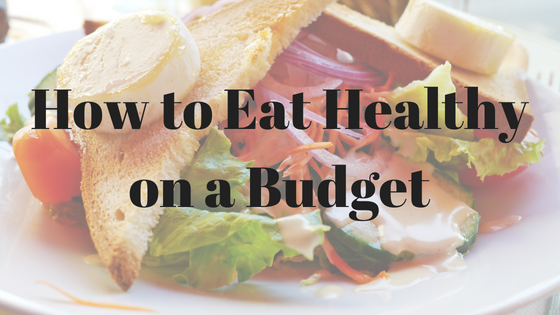
Eating a healthy diet is paramount to your personal well-being, but if you’re struggling in this economy, it can be difficult to get the most out of a meager grocery budget.
Having a healthy eating plan and sticking to it diligently can help you get more healthy food at a lower cost, which will allow you to prepare healthier meals for yourself and your family every day.
Here are a few simple tips to help you eat healthy while sticking to your budget:
Grocery Shopping
1. Set aside a time to make your weekly meal plan.
Find the weekly sales in the ads for each of the grocery stores in your local area. Decide on your meals for the week ahead well in advance of your trip to the store.
2. Make a list.
After planning your meals, write down all the ingredients you need for each of the meals for the week. Check throughout your pantry, freezer, and refrigerator to see if you already have some of the items you need. Make out your grocery list and be determined to stick with it!
- Include everything you’ll need for drinks, snacks and desserts.
- Remember preparation ingredients such as butter, flour, sugar, and various spices.
- Replenish your cleaning supplies.
3. Clip coupons for items that you’re sure you’ll use.
Leave any remaining coupons at home in the recycling bin so you’re not tempted to “save” on items you don’t actually need or will go to waste.
4. Never shop for groceries on an empty stomach.
Studies show that you’re far more likely to buy items that aren’t on your list if this is the case.
- If you can’t go to the store after a hearty meal, take a light snack with you to help you resist temptation while you’re at the store.
5. Buy items around the perimeter of the store.
These items are the healthiest choices by far compared to the center aisles or near the checkout line. The outer ring products include fruits, vegetables, meats, and dairy items. The center aisles are processed and convenience foods. They are more expensive in addition to being unhealthy.
6. Go for the fruits and vegetables that are in season.
These will often be far cheaper than non-seasonal food choices. While you’re looking at the fruits and vegetables, see if any of these vitamin-rich foods are on sale.
- Choose large bags rather than individual pieces of fruit. Larger bags are very often cheaper by the pound that individual items.
7. Buy generic or store brands.
There generally isn’t much difference in how the foods taste, but you will often see a pretty big difference in the price.
Other Avenues to Eat Healthy While on a Budget
1. Prepare your own snacks.
Eating when your family is away from home is the time when it’s easiest to purchase junk food from vending machines or a fast food drive thru. Fresh fruit and vegetable sticks with dip are much healthier options. Also stock up on nuts, jerky, and cheese cubes.
2. Eat at home as much as possible.
Make the majority of your meals from scratch and eat them at home. This will give you control over your meal’s contents as well as save you a lot of money.
- Eating out tends to encourage overeating because the portion sizes are much larger.
3. Drink healthy.
When trying to eat healthy on a budget, do not forget to pay attention to what you’re drinking. Sugary drinks, soda, fancy lattes, will not only strain your budget, they also contain a lot of calories and are counter-productive to a health diet.
- Look for 100% pure juices with no sugar added.
- Drink more water. The benefits go far beyond cost savings!
- Cut out soft drinks altogether.
- Drink low fat milk
If you follow these simple tips, you’ll not only find the joys of healthy eating, but you’ll save money in the process. You may have to spend a little extra time with food preparation, but the benefits are amazing!


